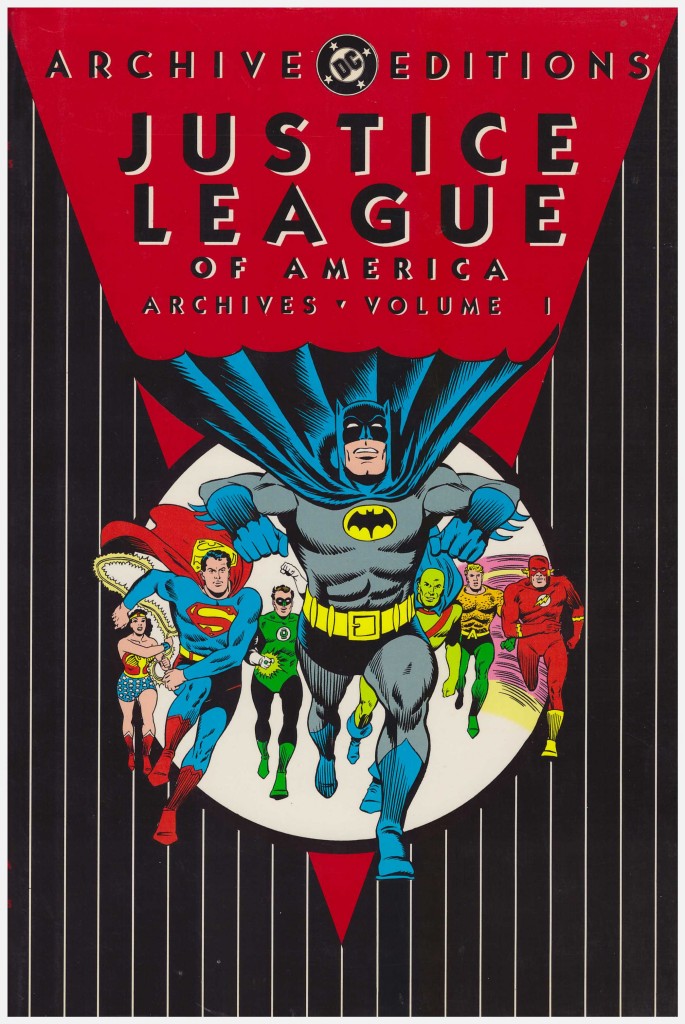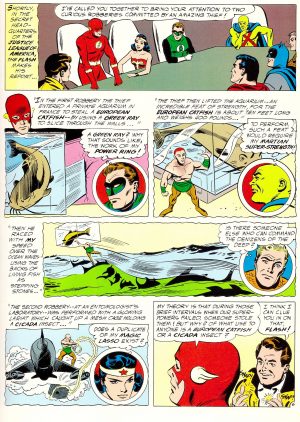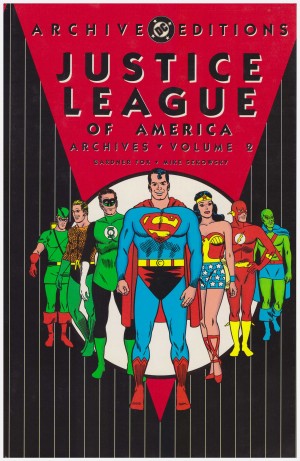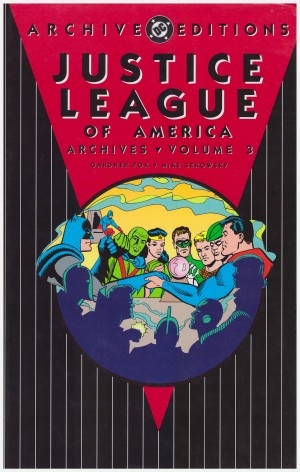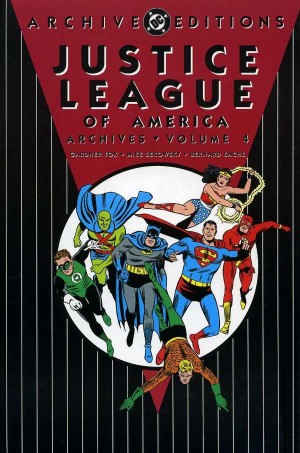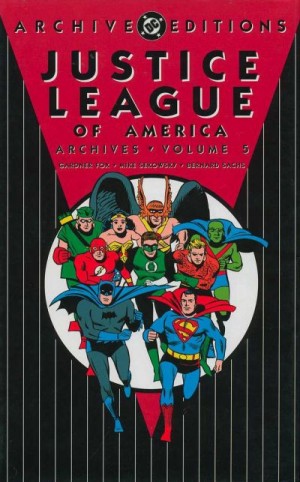Review by Karl Verhoven
DC provided new heroes with old names in the 1950s, and their teaming duly followed as the Justice League of America were accorded a slot in a tryout title. In the 21st century it’s difficult to imagine the thinking behind that conservative approach. Batman, Superman and Wonder Woman had ridden out collective audience ennui that killed off most other superheroes by the early 1950s, while Aquaman and later addition Green Arrow, always anthology features, survived by default. There’s argument as to whether 1955’s arrival of the Martian Manhunter or 1956’s reworking of the Flash kickstarted the superhero revival, and both are present. As is the re-imagined Green Lantern. These were DC’s top of the line superheroes, yet teaming them only merited a three issue run in a tryout anthology!
Gardner Fox’s background was primarily in science-fiction, but he supplemented his income from pulps and novels with comics work. This stretched back to the 1940s when he’d written every prominent DC character. That included the Justice League’s precursors, the Justice Society of America tales, and he follows his quaint 1940s method a decade later. The heroes chat together to begin each tale, but three manifestations of the menace always occur, so they split into teams to deal with them before jointly confronting the mastermind at the conclusion. To involve Aquaman one segment always occurs in water. To prevent Green Lantern’s power ring being effective, one problem is always yellow in colour. And Superman and Batman are shown to be members, but rarely participate. Yet for all that, Fox’s SF plots are clever and intriguing. At this point at least.
The rigidly applied formula is one reason why the excitement of this material has diminished considerably since 1960. Another is characterisation being no consideration whatsoever. Dialogue is resolutely expository to move the plot forward, beyond knowledge specific to individual characters: “The temperature of the water has reached 150° Fahrenheit”, explains Aquaman. “When it reaches 212° the ocean will boil away.” Fox peppers the scripts with snippets of this nature. In a pre-internet era with libraries restricted to cities, DC saw their remit as educational as well as entertaining.
Further rooting the stories in time was teenage sidekick Snapper Carr, so named as he clicks his fingers when excited, replete with hip dialogue, or at least hip as filtered through the then 49 year old Fox. “Man, this grass mat is the coolest”, exhorts Snapper after mowing the lawn, “wait’ll Daddio casts his orbs on it!” The exclamation mark ends every sentence not featuring a question mark or ellipses. Another quaint detail is attempting realism in a science-fiction environment. “I am Dhelon of the planet Dhor”, explains Kanjar-Ro, while a footnote informs us that Dhelon is the equivalent of a dictator on Earth. Each of his three rivals merits a similar explanation.
Kanjar-Ro is among the legacy enemies created here, others being Amazo, a robot endowed with the powers of the entire Justice League, Doctor Destiny, Starro and Professor Amos Fortune.
Mike Sekowsky’s art is a wonder, able to produce a credible representation of anything asked in clear layouts, yet there’s a quirky offbeat quality, and his anatomy is eccentric. Context is everything, though, and the whole works. Despite this, Paul Gambaccini’s introduction reveals he wasn’t popular with early organised comic fandom.
While stilted and formulaic, these stories may spark a visceral echo of resonance for those who read them as children. Given the price of the lavish presentation, though, the merely curious are directed to the colourless reprints on pulp paper to be found in volume one of Showcase Presents the Justice League of America.
